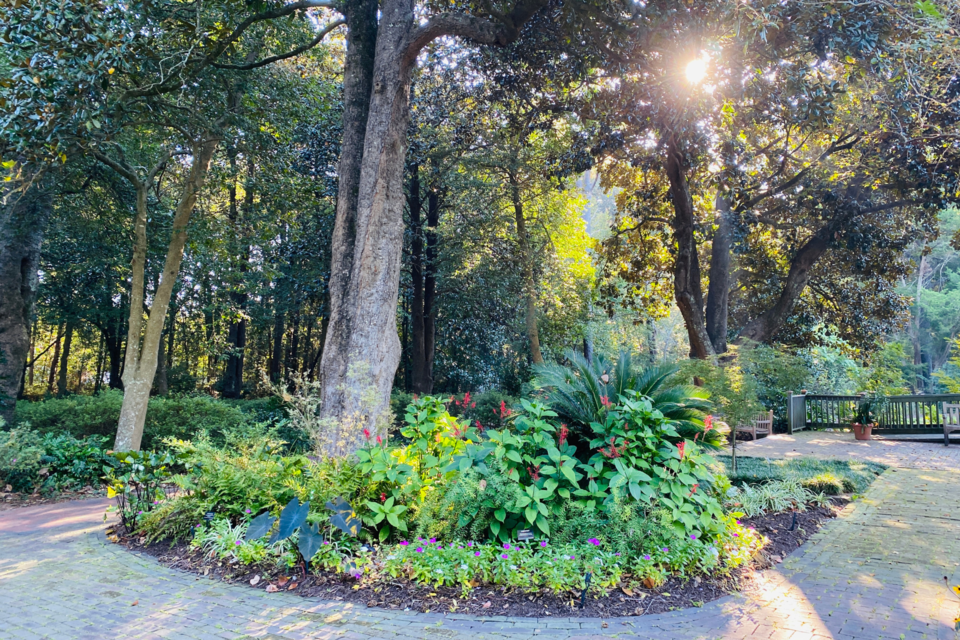There are three areas in gardening and landscaping that mistakes are often made. Planting, mulching and watering seem like simple chores, but when they are not done correctly plants often suffer. These three tasks are often done incorrectly. Individuals and businesses purchase healthy plants that are then planted, mulched, and watered incorrectly resulting in poor growth, disease and insect infestation. Many problems with plants in the landscape can be avoided by using proper planting, mulching and watering methods.
When digging individual planting holes be sure it is two to three times the width of the root ball. The reason the hole should be this wide is to provide loose soil around the root ball for new roots to easily grow into and allow for easy water infiltration around the root ball. Do not dig holes just wide enough to drop plants in, because the roots will become restricted and grow in circles around the root ball. Do not plant too deep. Be sure not to put any soil on top of the root ball. The reason for keeping the root ball level with the surrounding soil is that roots need oxygen and covering them up will cause suffocation. Planting too deep causes the buried portion of the root to struggle, the trunk stays wet causing decay, plants weaken, and the appearance of the plant is not what you were looking for in your landscape or garden.
Mulch is generally applied shortly after planting is completed. Mulch is a material placed on top of the soil to cover and protect it. Pine straw, pine bark, hardwood mulch and wood chips are commonly used. The benefits of mulch include moisture conservation, weed reduction, appearance and prevention of damage from lawn equipment. Mulch should be placed around plants to a depth of two to four inches. If trees are planted in lawn areas, an area of mulch should be placed around the tree. Do not put any mulch within three to four inches of tree stems. Mulch placed against the stem can cause bark decay and root suffocation just like planting too deep. Do not pile mulch against stems; instead, use the excess mulch to make wider mulch rings that will help the plant's root system become established.
Proper watering is just as important as correct planting and mulching. Plants often die or perform poorly due to under or over watering. In many situations plants suffer due to lack of watering shortly after planting. Remember – in southeast Georgia we are never more than two weeks away from a drought. Plants installed in the landscape are either container grown in well drained pine bark or field dug and loose many of their roots. In either case, water is an important part of planting and establishment. Regular watering is critical during establishment of newly planted trees and shrubs. Keep the root system moist, but not too wet, for the first six to eight weeks after planting. The amount of water and frequency of application depend on the soil type and the type of plant. Trees and shrubs may require watering twice a week when there is no rain. Annuals and ground covers may need daily watering during establishment. Let soil moisture be your guide for watering frequency.
Watering after plants are established is also important. However, take special care not to over water. The best recommendation for water conservation is to water only when plants first begin to show signs of wilt.
Bill Tyson is the county agent for Bulloch County Cooperative Extension of the University of Georgia. Email him at [email protected] or call the Extension office at (912) 871-6130.




